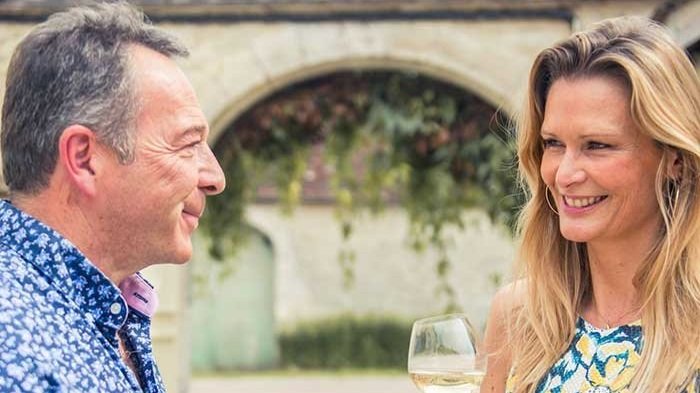Champagne Pierre Brigandat
Pierre Brigandat didn’t originally come from a winemaking background. The Brigandat family had a small farm in the village of Channes, in the Aube’s Bar-sur-Seine, tending crops and livestock for self-sufficiency but not for commercial purposes. Pierre became a banker, and eventually the head of the Crédit Agricole in the nearby town of Les Riceys. However, he also had an interest in vineyards, and between 1961 and 1985 he assembled a collection of seven hectares of vines in Les Riceys, Channes and Buxeuil. He quit the bank in 1985 to focus full-time on the wine estate, and began to increase his commercial production of champagne. His son Bertrand completed his oenological studies in 1993 and joined him at the estate, and since 2001 Bertrand has taken over the reins full-time.
In this part of the Aube, the vineyards are on the same Kimmeridgian limestone as in Chablis, giving the wines a beautiful mineral edge to complement the inherent richness from this warmer sector of Champagne. The Brigandats have some of the oldest vineyards here, having been among the first to replant after WWII. (Much of this region did not get re-planted until the 70s and 80s - Brigandat developed their parcels in 1965.)
The winery occupies an old farmhouse in the middle of the village, which was expanded in 1985 to accommodate a larger production of wine. All of the wines are fermented and stored in enameled steel tanks, and while there are several thermo-regulated, stainless steel tanks used for cold-stabilization, even these are lined with enamel, as Bertrand Brigandat doesn’t like the idea of wine in direct contact with stainless steel. The wines are aged on their fine lees for a relatively long period of time, until their bottling in late May or early June.
Brigandat has become increasingly focused on more natural viticulture, and in fact in 2001 he even began some trials with biodynamics. He eventually stopped these as his father didn’t approve, but he continues to plant cover crops in all of his vineyards, using a minimum amount of chemical treatments, and he also works with the lunar calendar when undertaking winery operations such as racking or bottling. His goal is to eliminate chemical herbicides completely in another three years, and has left open the possibility of exploring biodynamic viticulture again one day in the future.
The Brigandat vineyards are at the very edge of the Champagne appellation – the very last vineyards in Champagne as you head south from Reims and Epernay (or “the very first vineyard in Champagne as you drive up from Burgundy”, as Bertrand likes to put it!) In the cellar with Bertrand last spring, I asked him for his philosophy on viticulture and winemaking. His reply, in the only English words I've ever heard him speak – “Peace & Love”. Taste the wines – there’s Peace & Love in every glass…

